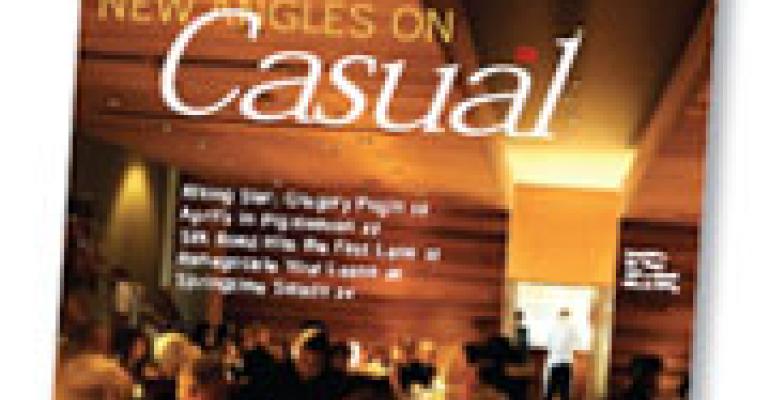
In the March issue, Editor Michael Sanson asked how best to deal with large-group reservations when some members of a group are running late. Do you seat members of the group who are on time or do you make them wait until the rest of the group arrives? Here's just a few of your responses.
Interesting article and your conclusion was spot on…the most critical way we in the industry affect our guests is with time. Too often we take time doing the small things. So, we have a policy that the guest is to be seated immediately regardless of how many for the reservation are here. First, this gets the guest to their table and second, it alerts the server their reservation is starting to arrive. Of course there are those instances when we do have a wait for tables and in that case I like to have the hosts ask anyone waiting if we can get them something while they wait and if so, get it.
Mike Adams
General Manager
Green Mill Restaurant and Bar
Eau Claire, WI
I am the host at a small Italian restaurant in Chicago called Angelina. Much like the restaurant you described, we have a very small bar and limited waiting space. In my time here, I have frequently encountered situations where some of a large party shows up on time while others are late. In response to your article I have a couple of things to say.
First of all, many people do not understand that a reservation is an agreement between both the guest and the dining establishment. While we promise to have a table ready for you at the appointed time, you as the guests have promised to bring a certain number of guests and arrive at the appointed time. The first way to avoid problems is for the restaurant to make it clear to the host of the party, or whoever makes the reservation, what is expected of the guests, and what the policies are regarding seating late-arriving parties. Hopefully, this info gets passed on to all of the expected guests.
Unfortunately, even with clear communication, problems can still occur. My best solution, and the one that is most fair for both the restaurant and the guest, would be to seat the punctual members of the party at a table that accomodates their number, and plan to seat the late-arriving guests at a separate, but nearby table. Obviously this arrangement is not ideal for guests who are hoping to celebrate together, but in a small, popular restaurant, a little compromise is necessary to accommodate everyone, particularly from those who broke the agreement in the first place.
Sean Hunt
Host
Angelina Ristorante
Chicago
We do make an effort to seat incomplete groups if it is unlikely we will be needing that table. That being said, we do a lot of walk-in business. This is a big issue that does upset a lot of customers. You are right, it's really a matter of training the public. The lateness of your guests not only inconveniences yourself, but many others. What is fair: making your group wait or seating your group and making another group wait or, worse, turning them away, costing the restaurant much-needed sales. We must also consider the server, who gave up his evening in hopes of waiting on three to five tables. If a party is late it often takes away one of his turns and penalizes the server up to to 25 percent of his expected income for the night. The solution for larger parties is to book earlier or later than the rush, usually before 6 and after 8:30 in most restaurants. At that time most restaurants are able to seat incomplete parties.
John Meyer
Owner
Classic Cup Cafe on the Plaza
Kansas City, MO.
Large restaurants frequently do not seat large parties until all are present. This is a wide spread practice having nothing to do with selling drinks in the bar, but with table turn, which is a science that can increase sales. With other tables opening every 5 minutes the reservation can be seated at a later time and the table that was reserved for them can be seated by walk in guests immediately. With a small restaurant in this market place, making a party of 4 stand in the bar area for 30 minutes is not hospitality or good sense. “Treat your customers as they are guests in your home” would be the right answer.
Jim Painter
Owner
Red Smoke Grill
Pleasanton, California





